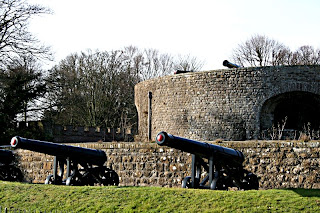 |
| Tom Otterness sculpture, image from Flickr |
Last week the jury met to decide which words would stand a chance of being used. For "buzz" they chose "ramdam", a word already in the French language. Oddly it's also an import, from Arabic, but that presumably is all right because it's not Anglo Saxon. It means noise, representing the noisiness of Ramadan evenings, bush telegraph, and information flow, and it was unanimously accepted.
Next it was decided that "bolidage" would replace the word "tuning" (of a car). "Un bolide" is a racing car so there is some logic there. But at that point they came to a halt.
The suggestions for "newsletter" were narrowed down to "cybernote", "périodiciel" ou "netzine", though again I don't think the last one sounds too French. Périodiciel is just far too long and hardly trips off the tongue.
Boringly, "talk" could be replaced by "débat", with "parlage", "parlotte", "discut'", "échapar", "débadidé", "débatel" and "débafusion" all up for discussion. Discussion but no decision.
As for "chat", the possibilities are apparently endless. Eventually it was narrowed down to either "tchatche" which is little more than a Frenchified spelling, and the very best of all of them: "éblabla"!
Eblabla, how superb! It has a certain ring to it, don't you think? I'll very happily adopt it.
PS. I have to add that the article where I read about this had comments following. The first started off "O M G". I think there is a long way to go before the battle is won.
![Reblog this post [with Zemanta]](http://img.zemanta.com/reblog_e.png?x-id=13a32250-9ab2-4b1d-983d-2de88fca4dff)







































![Reblog this post [with Zemanta]](http://img.zemanta.com/reblog_e.png?x-id=ce78f05e-87df-4322-a494-1b619869a5cf)